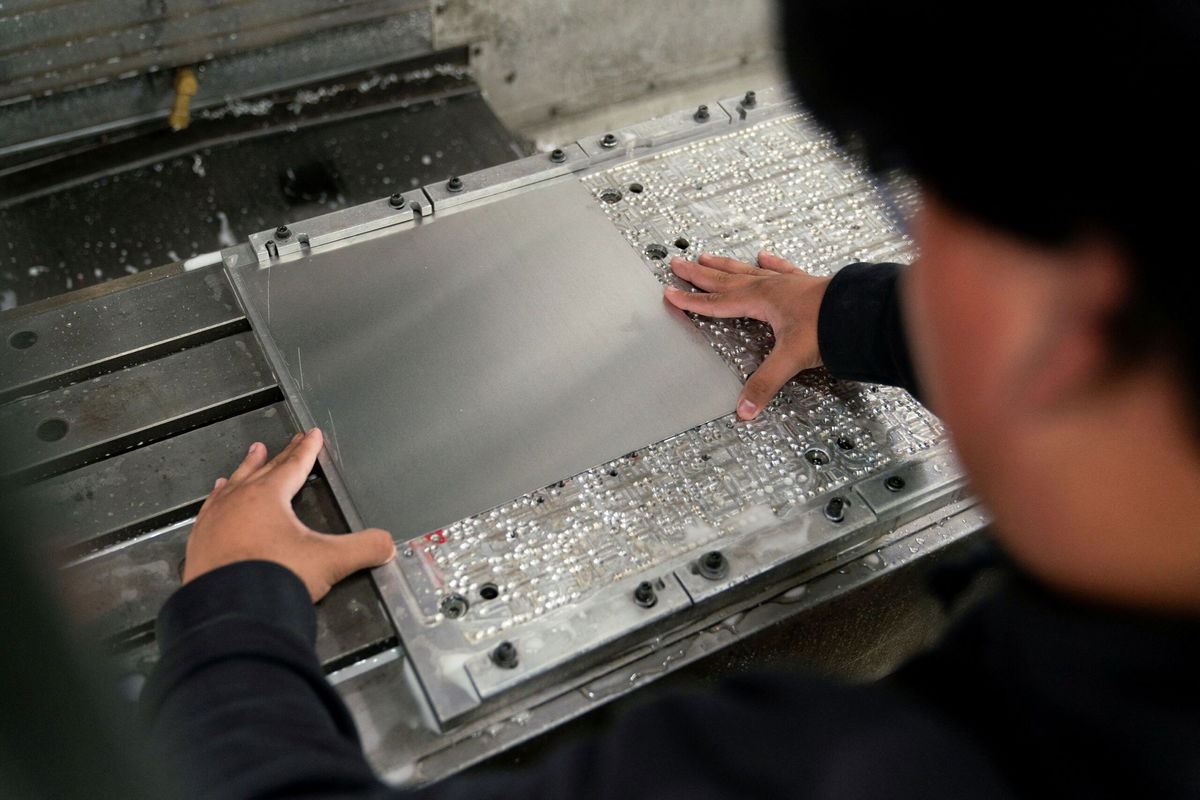Another key US inflation gauge fell in September

A worker places metal in a milling machine while producing parts for a Boeing 777 jetliner at Pathfinder Manufacturing
By Alicia Wallace, CNN
(CNN) — Inflation for US producers slowed further in September, adding to hopes that prices aren’t getting jacked up before they get to consumers.
The Producer Price Index, which measures average price changes seen by producers and manufacturers, came in at 1.8% for the year that ended in September, a slight downshift from the 1.9% gain in August, according to Bureau of Labor Statistics data released Friday.
The annual rate is running faster than the 1.6% gain economists expected, according to FactSet estimates; however, August’s rate was revised higher from the initial 1.7% estimate, so prices still fell in September.
For the month, prices held flat, as falling energy prices countered a 1% leap in foods — their highest jump since February — and resulted in overall goods deflation. Services ticked up 0.2%, BLS data shows.
Excluding the more volatile categories of food and energy, core PPI rose 2.8% from the year before, an acceleration from a 2.6% rate in August. On a monthly basis, the core index advanced 0.2%.
“Today’s PPI was a bit of a mixed bag; but overall, it should help ease any immediate concerns about reheating inflation from yesterday’s [Consumer Price Index],” which showed inflation rising above expectations, Chris Larkin, managing director of trading and investing for E*Trade, wrote in commentary issued Friday.
PPI is important because it’s often seen as a bellwether for the price increases consumers will wind up paying down the line. If materials and finished goods cost more for manufacturers and producers, the thinking goes, the price increases could be passed along to everyday Americans — although that’s not always the case.
On Thursday, the latest Consumer Price Index — a measurement of average price changes for commonly purchased goods and services — cooled to 2.4% in September, landing at its lowest rate since February 2021.
The slight acceleration in core PPI was anticipated due in part to both unfavorable “base effects,” where the year-ago period experienced sharper disinflation as well as strong demand.
“Some of the inventory accumulation that was pulled forward in anticipation of the port strike was absorbed because [third quarter] growth was so strong,” Joe Brusuelas, principal and chief economist, told CNN on Thursday. “So, we’re seeing a little bit of pricing pressure around that. Then again, those are temporary and will ease a bit as we go forward.”
The broader inflation outlook remains positive, he added.
“Inflation just continues to cool,” he said. “It’s created the conditions whereby the [Federal Reserve] feels confident they’re going to reach their 2% mandate.”
Last month, with prices increasing at a more moderate pace and some data hinting at a weaker job market, the Fed opted to go big and cut its benchmark interest rate by a half-point and penciled in two more quarter-point cuts to close out the year.
This latest data keeps those two quarter-point cuts still on the table, Brusuelas said.
Inflation in the US has slowed considerably since peaking in the summer of 2022, and prices are rising at an annual pace that’s more in line with what the central bank wants to see. As a result, Fed officials have now shifted from trying to contain inflation to trying to keep the job market healthy, the other half of their so-called dual mandate.
However, that outlook — and the data — have grown cloudier following a stronger-than-expected jobs report in September and the possibility that recent hurricanes and tension in the Middle East could budge prices higher.
“The intervening factor here, though, between now and the end of the year is there’s clearly going to be distortions that are going to be injected into the data due to the twin hurricanes and to the extent in which supply chains and transportation are disrupted,” Brusuelas said. “We would likely expect to see inflation firm at best or slightly — really slightly — reaccelerate until those temporary bottlenecks can be undone.”
The-CNN-Wire
™ & © 2024 Cable News Network, Inc., a Warner Bros. Discovery Company. All rights reserved.